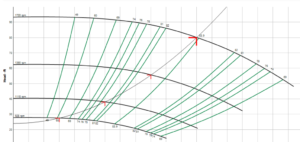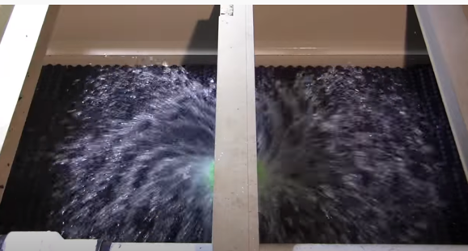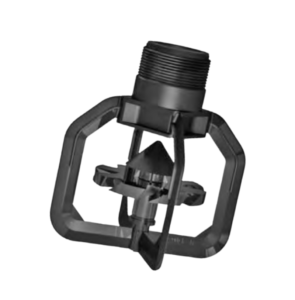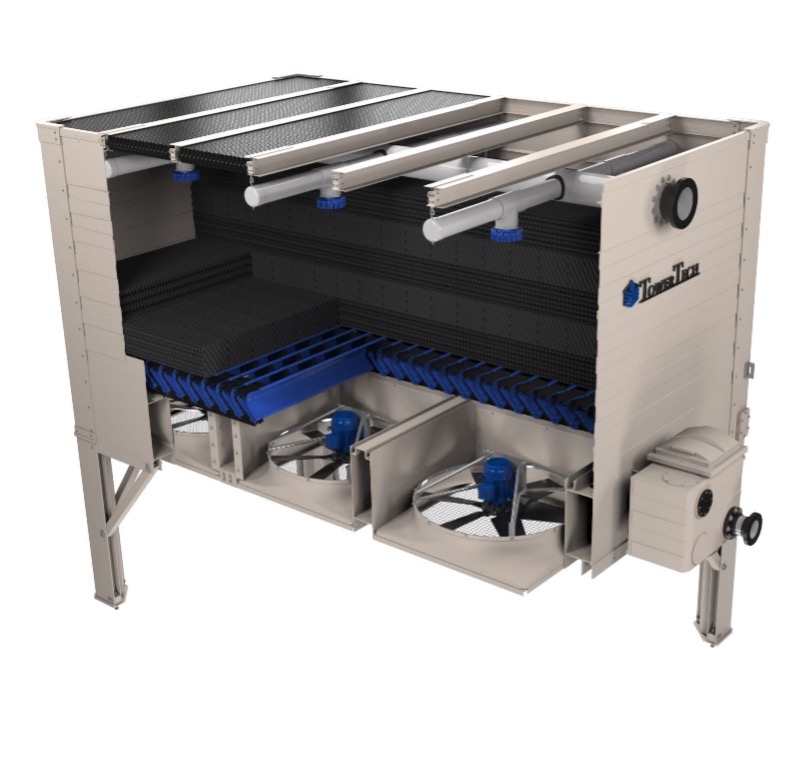
We understand the tremendous water savings available with the information provided in Part 1 & Part 2 of this cooling tower series. There is more to the story. How about energy savings?
Variable Flow Condenser Water Systems
Most new chillers can now handle variable flow through the condenser providing many opportunities for operational savings. As the cooling tower is an integral part of this system, it is important to understand the effect of flow rate changes and how to ensure your cooling tower can provide optimal savings while operating trouble-free.
Cooling towers are often sized to satisfy a specific design point. Evaluating the energy costs at this single point, which may amount to only 100 hours of the year, may cost the owner significantly during off-peak operation. Reduced loads and low wet bulbs during winter operating conditions equate to very little energy use.
The real savings that are achievable with variable flow condenser water systems occur during spring and fall conditions. At these times, the load requirements are still relatively high, but a reduction in wet bulb allows towers to be shut down and/or a few fans to be cycled off. During these slightly reduced load conditions, which amount to much of the operating year, energy savings can be improved by spreading the reduced flow rate to available towers.
Square vs. Round Spray Patterns
Most conventional cooling towers have the traditional umbrella shape flow pattens. These round pattern design type towers have areas of fill that dry out under the low flow conditions. This results in mineral deposits. Over time these mineral deposits become scale. This increases maintenance and decreases thermal efficiency. The result is more energy use.
Tower Tech nozzles have a square pattern. On reduced flow rate there is less water volume, but the area of spray remains close to the same. This eliminates the dry areas in the fill and the scaling and maintenance required.
The nozzle maintains the same flow pattern as the flow rate varies, preventing a severe degradation in tower performance. This allows the user to effectively use the fill that was purchased to meet the design requirement but often remains idle for much of the year.
Higher Turndown 3:1 Nozzles
Reduced water flow in a conventional tower with fixed orifice/nozzle water distribution will produce uneven fill wetting. When this happens, the air stream will tend to travel through the fill area with no water and will not mix properly with the fill area that has the water.
Conventional cooling tower manufacturers do not usually recommend reducing the flow rate through a fixed orifice nozzle to less than 80% of design flow. Tower Tech’s patented Spray Nozzle can handle up to a 3-to-1 turndown while maintaining a constant pattern with uniform water distribution ensuring trouble-free operation.
This means the owner will operate multiple cooling towers at lower flow rates rather than cycling towers in and out of service during the year. One big plus for energy savings.
Multiple Smaller Variable Speed Fans
Many cooling towers use large fans with squirrel cage motors. Even in variable speed applications, these motors and the fans have limitations on how low they can be turned down.
Tower tech uses multiple smaller fans with direct drive motors and variable speed drives (VFD). This provides redundancy to protect the owner. This design also allows the fans to drop all the way down to 10 Hz. This saves more energy in low load spring and fall operation.
The combination of all advantages allow a significant increase in savings. Take an example of a three cell tower system. In the spring and fall when the load drops to 1/3 of the total design, the operating cost per ton can be 10% of traditional staged tower systems.
Next week, part 4 of the series will summarize with something for everyone in the construction process.
Discover more on our previous series covering Cooling Towers:
Part 1: Cooling Tower Design to Save the Planet: Drift Eliminators
Part 2: Cooling Tower Design to Save the Planet: Cycles of Concentration




